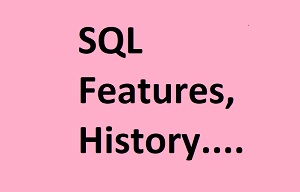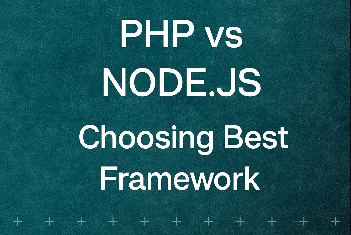Introduction To Flutter Architecture
Flutter architecture refers to the design patterns and principles that govern the development of Flutter applications. It provides a structured approach to organizing code, managing state, and separating concerns. By following best practices and adopting the right architecture pattern, you can ensure seamless development and maintainability of your Flutter projects.
Unlock your tech superpowers and become a Flutter architecture pro! ✨ Start your 10-day free trial on Pluralsight today and gain access to thousands of courses that will help you master in-demand skills and land your dream job. Don't just dream it, code it! Click the image below to start your free trial.
Understanding the Importance of Flutter Architecture Patterns
Flutter architecture patterns are predefined templates or guidelines that help developers structure their codebase and adhere to best practices. These patterns provide a blueprint for organizing code, managing state, and handling communication between different components of a Flutter application.
By following architecture patterns, developers can achieve better code modularity, reusability, and testability. They also promote separation of concerns, making it easier to maintain and scale the application as it grows. Some popular Flutter architecture patterns include Clean Architecture, MVVM (Model-View-ViewModel), and BLoC (Business Logic Component).
Exploring Clean Architecture in Flutter Development
Clean Architecture is a software design principle that emphasizes separation of concerns and independence of the application's business logic from external dependencies. In the context of Flutter development, Clean Architecture provides a clear separation between the user interface, business logic, and data access layers.
The key components of Clean Architecture in Flutter are:
Domain Layer:
This layer contains the business logic and defines the core functionality of the application. It should be independent of any external frameworks or libraries.
Data Layer:
The data layer is responsible for fetching and persisting data from external sources such as APIs or databases. It should be abstracted away from the domain layer, ensuring loose coupling.
Presentation Layer:
This level manages the presentation layer and user engagement. It is responsible for rendering the UI components and communicating with the domain layer to perform business logic operations.
By following Clean Architecture principles in Flutter development, you can achieve a highly maintainable and scalable codebase, making it easier to add new features or modify existing ones without impacting the entire application.
Implementing MVVM Architecture in Flutter
MVVM (Model-View-ViewModel) is another popular architecture pattern that promotes separation of concerns and facilitates testability. In MVVM, the application is divided into three main components - Model, View, and ViewModel.
Model:
The model embodies the data and operational logic of the application.. It defines the structure of the data and provides methods to manipulate it.
View:
The View is tasked with displaying the user interface and capturing user input. It communicates with the ViewModel to update the UI and handle user actions.
ViewModel:
The ViewModel serves as a mediator connecting the View and the Model. It provides data and behavior to the View, allowing it to update the UI and respond to user actions. The ViewModel also abstracts away the business logic from the View, making it easier to test.
Implementing MVVM architecture in Flutter involves creating separate classes for the Model, View, and ViewModel and establishing a communication mechanism between them. This architecture pattern helps in decoupling the UI from the business logic, making the codebase more maintainable and testable.
The Benefits of Using the BLoC Architecture in Flutter
BLoC (Business Logic Component) is a reactive state management pattern that has gained popularity in the Flutter community. BLoC architecture promotes the separation of UI and business logic by introducing a layer called the BLoC to handle state management.
In BLoC architecture, the application is divided into three main components:
UI:
The UI layer is responsible for rendering the user interface and interacting with the user. It dispatches events to the BLoC and observes state changes to refresh the UI.
BLoC:
The BLoC acts as a mediator between the UI and the business logic. It receives events from the UI, processes them, and emits new states accordingly. The BLoC also communicates with external data sources or services to fetch or persist data.
Repository:
The Repository is responsible for abstracting away the data layer and providing a unified interface for data access. It communicates with the BLoC to fetch or persist data from external sources.
The BLoC architecture provides several benefits, including better separation of concerns, testability, and reusability of business logic. It also enables reactive programming, allowing the UI to respond to changes in state efficiently.
Unlock your tech superpowers and become a Flutter architecture pro! ✨ Start your 10-day free trial on Pluralsight today and gain access to thousands of courses that will help you master in-demand skills and land your dream job. Don't just dream it, code it! Click the image below to start your free trial.
Creating a Clean Architecture Diagram for Your Flutter Project
A clean architecture diagram is a visual representation of the different layers and components of your Flutter project. It helps in understanding the flow of data and dependencies between different parts of the application.
To create a clean architecture diagram for your Flutter project, start by identifying the key components of your application, such as the UI layer, business logic layer, and data layer. Then, draw arrows to represent the flow of data and communication between these components.
Include labels and annotations to provide additional context and make the diagram more understandable. You can use tools like draw.io or Lucidchart to create professional-looking architecture diagrams for your Flutter projects.
A clean architecture diagram provides a high-level overview of your application's structure and serves as a reference for developers working on the project. It helps in visualizing the separation of concerns and ensures that the codebase follows architectural principles.
Best Practices for Developing with Flutter Architecture
Developing with Flutter architecture requires following best practices to ensure a clean and maintainable codebase. Here are some key best practices to consider:
Separation of Concerns:
Divide your code into separate modules or classes, each responsible for a specific functionality. This promotes reusability and testability.
Use Dependency Injection:
Inject dependencies into your classes instead of creating them directly. This enhances the flexibility of your code and simplifies testing.
Unit Testing:
Write unit tests for your business logic and ensure that they are independent and isolated from external dependencies. This helps in catching bugs early and ensures the stability of your application.
Code Organization:
Follow a consistent folder structure and naming conventions for your Flutter project. This makes it easier for other developers to navigate and understand your codebase.
Error Handling:
Implement proper error handling mechanisms in your code to handle exceptions and failures gracefully. Use try-catch blocks and error handlers to catch and handle errors appropriately.
By following these best practices, you can build high-quality Flutter applications that are easier to maintain, test, and scale.
Common Challenges and How to Overcome Them in Flutter Architecture
While Flutter architecture provides several benefits, developers may face some challenges during implementation. Below are typical challenges and suggestions to address them:
Steep Learning Curve:
Flutter architecture patterns may seem complex initially, but with practice and hands-on experience, you can master them. Invest time in learning the fundamentals and gradually implement them in your projects.
Choosing the Right Architecture:
With multiple architecture patterns available, it can be challenging to choose the right one for your project. Consider factors such as project complexity, team experience, and scalability requirements to make an informed decision.
Managing State:
State management is an essential aspect of Flutter architecture. Choosing the right state management approach, such as BLoC or Provider, can help in efficiently managing the state of your application.
Maintainability:
As your Flutter project grows, maintaining the codebase becomes crucial. Follow best practices, modularize your code, and refactor when necessary to ensure maintainability.
Performance Optimization:
Flutter's hot-reload feature makes it easy to iterate and experiment, but it can impact performance. Optimize your code by reducing unnecessary rebuilds and optimizing widget rendering to improve overall performance.
By being aware of these challenges and adopting strategies to overcome them, you can ensure a smooth development experience with Flutter architecture.
Recommended Resources for Learning and Mastering Flutter Architecture
To dive deeper into Flutter architecture and gain expertise in building scalable and maintainable applications, here are some recommended resources:
Official Flutter Documentation:
The official documentation provides comprehensive guides and tutorials on Flutter architecture patterns, state management, and best practices.
Flutter Architecture Samples:
Explore the open-source Flutter architecture samples on GitHub to gain insights into real-world projects and learn from industry experts.
Online Courses:
Platforms like Udemy, Pluralsight, and Coursera offer various Flutter architecture courses that cover topics like Clean Architecture, MVVM, and BLoC. These courses offer practical knowledge and hands-on experience.
Community Forums and Blogs:
Engage with the Flutter community on forums like Stack Overflow, FlutterDev, and Reddit. Follow popular Flutter blogs like Flutter.dev, Flutter Gems, and Flutter Institute to stay updated with the latest trends and best practices.
By leveraging these resources, you can enhance your understanding of Flutter architecture and become proficient in building robust and scalable Flutter applications.
Conclusion: Harnessing the Power of Flutter Architecture for Seamless Development
In conclusion, Flutter architecture serves as the foundation for developing high-quality and maintainable applications with Flutter. By understanding the importance of architecture patterns like Clean Architecture, MVVM, and BLoC, you can structure your codebase effectively and separate concerns, leading to a more scalable and maintainable application.
Remember to create a clean architecture diagram for your Flutter project to provide a visual representation of the different layers and components. Follow best practices for developing with Flutter architecture, tackle common challenges, and utilize recommended resources to enhance your skills and expertise.
Unlock your tech superpowers and become a Flutter architecture pro! ✨ Start your 10-day free trial on Pluralsight today and gain access to thousands of courses that will help you master in-demand skills and land your dream job. Don't just dream it, code it! Click the image below to start your free trial.
Happy coding with Flutter architecture!
Related Articles













